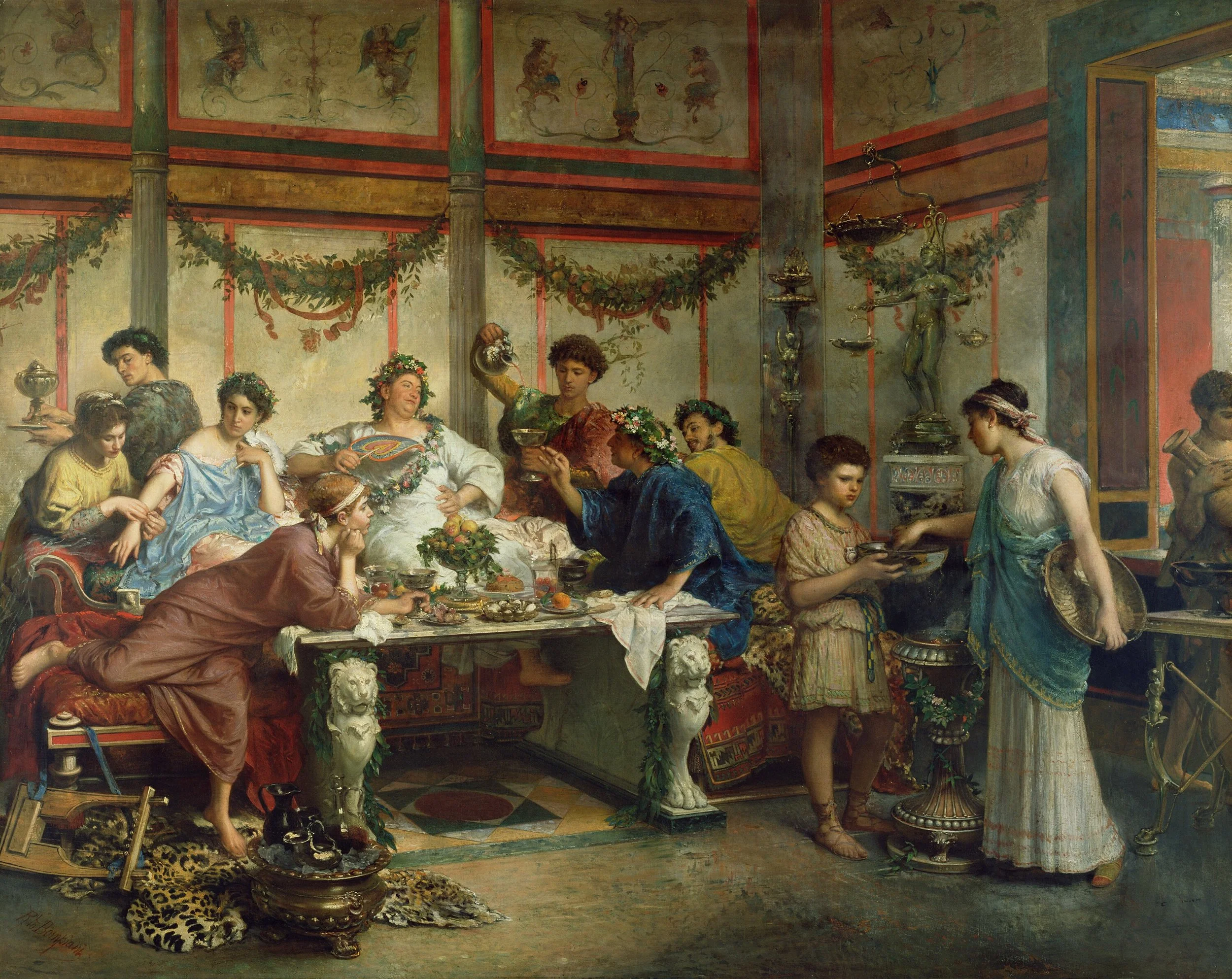Current Research
Current Research Projects
Apart from my ongoing work at the site of Gabii more generally, these are my current research and writing projects.
Feasting deposits (ongoing!)
In 1996, Brian Hayden articulated criteria for identifying evidence for feasting in the archaeological record. These included things like, “special foods,” “preparation vessels,” and a “facility.” These criteria were useful in helping think about the scale and nature of communal eating as well as the role of these events in ancient societies. When large-scale communal consumption is discussed in Roman contexts, however, words like “dining” or “banqueting” rather than “feasting” are used to refer to the activity. Roman contexts remain quite disconnected from the rest of the anthropological literature on the subject. I am interested in how we see feasting in the Roman world. Are there feasting deposits, and how do we identify them? What are the implications for choosing or choosing not to characterize something as evidence for feasting? Were public events or private events commemorated in different ways?
Repairs on Terra Sigillata (ongoing!)
The presence of terra sigillata pottery is often used by scholars as a proxy for the cultural integration of people conquered by the Romans. I examine the movement and repair of terra sigillata in the western Roman provinces. Broken vessels were repaired by joining cracked or broken sections together with metal clamps. At the periphery of the Roman Empire, a few studies have noted terra sigillata repaired in this way. This is in contrast to piles of unblemished tablewares found casually discarded in their regions of production. To-date there has not been an effort to tabulate where and when repairs occur in order to capture patterns of behaviour. Thus, I am compiling a macro-level study, tracking repairs spatially and chronologically, to explore how the empirical data reveals insights into perceptions of both economic and cultural value.
Composition of Wattle and Daub (new!)
The goal of this project is to better understand Iron Age mud hut construction at Gabii in terms of the composition of the clay and the re-facing and repair of walls and floors. My colleague, Giuseppe Lucarelli, is working on sampling and characterizing the macroscopic remains and the depositional conditions. I am doing petrographic analysis of samples from huts excavated in Area D (in 2015) and Area C (excavated in 2022 and 2023). We are also interested in what variability there may be between the phases of huts in each area and between the huts in the two different areas. This is the first phase of what will likely be a broader study (with more samples and perhaps chemical analyses) in future.
Deposits and Formation Processes (Neverending!)
Inspired by emerging excellent work on discard, urban rubbish, feasting, ritual deposition and formation processes more generally in the Classical world, I am interested in exploring how residuality, object use life, and discard practices intersect in Roman Italy. I am also interested in how our expectations for ancient behaviour colour how we interpret archaeological assemblages in different periods and different regions. I am exploring this from the theoretical perspective using case studies of whole assemblage study as well as using quantitative approaches at the site of Gabii.



